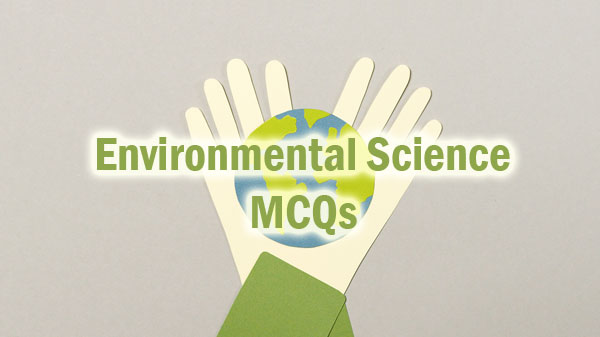Environmental Studies Previous Year Question
Download all Environmental Studies Previous Year Question Papers here. We are providing Environment Science Previous Year Question Papers. We have given the solutions for EVS solved Previous Year Question Papers to make your preparation efficient.

Click here to Download the Environment Science Previous Year Question Papers from the attached pdfs. EVS Previous Year Question Papers attached in the PDF Format so the aspirants can download quickly. Along with these Environmental Studies Previous Year Question papers, we have attached Environment Science Syllabus and Exam Pattern.
Environmental Studies Previous Year Question Papers are available. Applicants can download EVS Previous Year Question Papers. Also, get the Study material, Preparation tips in addition to the EVS Previous Year Question Papers for posts. On our page, we provide Environmental Studies Previous Year Question Papers for the sake of aspirants.
Previous Year Question on Environmental Studies
1. Schedule II of the Hazardous Waste (Management Handling and Transboundary Movement) Rules, 2016 gives :
(A) List of processes generating hazardous waste
(B) List of waste constituents with concentration limits
(C) List of hazardous wastes applicable for import and export not requiring prior informed consent
(D) List of hazardous wastes for import requiring prior informed consent
2. Which of these biomedical wastes are to be disposed in yellow colour coded container as per the Biomedical Waste (Management and Handling) Rules, 2016 ?
(A) Human anatomical, animal, microbiology and biotechnology wastes
(B) Waste sharps
(C) Glassware
(D) Liquid waste
3. Montreal Protocol is related to :
(A) Greenhouse gas emission reduction
(B) Reducing ozone depleting substances
(C) Climate change protocol
(D) Hazardous waste
4. The following are the types of environmental audit :
(A) Liabilities Audit
(B) Waste Audits
(C) EMS Audit
(D) All of the above
5. Biological treatment of waste water removes :
(A) Suspended organic solids
(B) Dissolved organic solids
(C) Dissolved inorganic solids
(D) All of the above
6. Select the attached growth process from the following :
(A) Anaerobic Contact Process
(B) Activated Sludge Process
(C) Rotating Biological Contactor
(D) Upflow Anaerobic Sludge Blanket
7. BOD of effluents discharged in inland surface waters should not exceed :
(A) 30 mg/L
(B) 50 mg/L
(C) 10 mg/L
(D) 100 mg/L
8. Which of the following can remove particulate as well as gaseous pollutants from air emissions ?
(A) Wet scrubber
(B) Cyclone
(C) Electrostatic precipitation
(D) Bag filter
9. A size of plot for vegetation studies is decided on the basis of :
(A) No. of species
(B) Area covered by vegetation
(C) Species-Area curve
(D) Random
10. The term species richness in biodiversity study refers to :
(A) Number of genera in an area
(B) Number of species in an area
(C) Species composition in an area
(D) Relative abundance of species in an area
11. The continuous increase in concentration of a toxicant at successive trophic levels in a food chain is :
(A) Bioremediation
(B) Biotransformation
(C) Bioaugmentation
(D) Biomagnification
12. Dams during their early stages of formation are relatively barren and nutrient deficient supporting very poor aquatic life are :
(A) Epiphytic
(B) Parasitic
(C) Oligotrophic
(D) Saprophytic
13. Which one of the following agencies has been designated by the Ministry of Environment, Forest and Climate Change for Indian Eco-Mark Scheme ?
(A) Board of Indian Standards
(B) Bureau of Indian Standards
(C) Directorate of Marketing
(D) Directorate of Plant Protection
14. ‘‘Salt water intrusion’’ in the coastal area is :
(A) A flow of saline water on the land through estuary
(B) An entry of saline water in a freshwater aquifer
(C) An increase in salinity due to waterlogging
(D) An entry of marine water in river in delta region
15. The process of formation of soil through the breaking down of rocks is called :
(A) Biogenesis
(B) Pedogenesis
(C) Biodegradation
(D) Biomagnification
16. The soil formed by the decomposition of silt brought by rivers is called …………………. .
(A) Red soil
(B) Black soil
(C) Alluvial soil
(D) Pod soil
17. Soil without living organisms is referred as ………………… .
(A) Fertile soil
(B) Subfertile soil
(C) Humus
(D) Mineral substrate
18. Dodo is a flightless bird which is :
(A) Rare
(B) Extinct
(C) Endangered
(D) Critically endangered
19. Net primary productivity in an ecosystem refers to :
(A) Apparent photosynthesis
(B) Total assimilation
(C) Total photosynthesis
(D) Assimilation
20. Phytoplankton stage during hydrosere development include the following community :
(A) Vallisnaria, Utricularia, Hydrilla
(B) Blue green algae, green algae, diatoms
(C) Typha, Sagittaria, Phragmites
(D) Nelumbo, Nymphea, Limnanthemum
More Questions on Environmental Science
21. Which of the following components of solid waste is reclaimed by mechanical recovery ?
(A) Food
(B) Plastics
(C) Leaves and plant debris
(D) Metals
22. Which of the following is eco-friendly process of solid waste management ?
(A) Incineration
(B) Landfilling
(C) Open dumping
(D) Conversion into Compost/ Biogas/Bioethanol
23. The GRIHA rating was developed by :
(A) ISO
(B) TERI
(C) MoEFCC
(D) IGBC
24. Calculate the resultant noise of four machines emitting the equal sound level of 60 dB(A) :
(A) 120 dB(A)
(B) 90 dB(A)
(C) 63 dB(A)
(D) 66 dB(A)
25. Which one of the following is NOT a natural factor that can affect watershed health ?
(A) Fires
(B) Mining
(C) Floods
(D) Earthquakes
26. Who was the founder of Appiko movement in Uttara Kannada ?
(A) Pandurang Hegde
(B) Ganesh Gauda
(C) Appa Swamy
(D) Sunderlal Bahuguna
27. Which of the following is an example of stepped matrix ?
(A) Leopold et al (1971)
(B) Johnson and Bell (1975)
(C) Carstea et al (1976)
(D) Asian Development Bank (1987)
28. Which of the following is wrong sentence related to Koyto Protocol ?
(A) Koyto Protocol was adopted in 1997
(B) The first commitment period of this Protocol ended in 2012
(C) The Protocol is about the reduction of Greenhouse gases
(D) The second commitment period of the Protocol will end in 2030
29. Energent woody plants that tolerate salinity of the open sea are known as :
(A) Grasses
(B) Herbs
(C) Shrubs
(D) Mangroves
30. Which one of the plant species occurs in mangrove ecosystem ?
(A) Rhizophora
(B) Azadirachta
(C) Mangifera
(D) Casurina
31. For a certain Normal distribution, the first moment about 10 is 40. What is the arithmetic mean ?
(A) 40
(B) 30
(C) 50
(D) 20
32. Which of the following is NOT a weakness in the Gaussian Plume Model ?
(A) The model does not evaluate dispersion in all three dimensions
(B) The model cannot be used for reactive pollutants
(C) The model is dependent upon steady-state conditions
(D) The model is not designed as a long-term air shed pollutant evaluator
33. Which of the following cross validation technique is best suited for time series data ?
(A) K-fold cross validation
(B) Leave-one-out cross validation
(C) Stratified shuffle split cross validation
(D) Forward chaining cross validation
34. The probability of rejecting the null hypothesis when it is true, is called :
(A) Level of confidence
(B) Level of significance
(C) Power of the test
(D) All of the above
35. The following are percentages of fat found in 5 samples of each of two brands of food :
A : 5.7, 4.5, 6.2, 6.3, 7.3
B : 6.3, 5.7, 5.9, 6.4, 5.1
To test the hypothesis of equal average fat content in the two types of food. Which of the following procedures is appropriate ?
(A) Two sample t-test with 8 degrees of freedom
(B) Paired t-test with 4 degrees of freedom
(C) Two sample t-test with 9 degrees of freedom
(D) Paired t-test with 5 degrees of freedom
36. The largest population that the resources of a given environment can support is :
(A) Population structure
(B) Carrying capacity
(C) Optimum population
(D) Minimum population
37. UNEP Headquarters is situated in which city ?
(A) Rome
(B) Kyoto
(C) Beijing
(D) Nairobi
38. First U.N. Conference on Man & Environment was held in which city and year ?
(A) London, 1962
(B) Stockholm, 1972
(C) Rio de Janeiro, 1992
(D) Paris 1982
39. ‘‘Itai Itai’’ disease spread was due to water contamination by which metal ?
(A) Mercury
(B) Lead
(C) Cadmium
(D) Arsenic
40. As per the notification, the coastal land upto how many meters from a stage along the banks of creeks, estuaries, backwater and rivers subject tidal fluctuations, is called the Coastal Regulation Zone :
(A) 500 m
(B) 300 m
(C) 200 m
(D) 100 m
41. Tiger is protected animal in which Schedule of the Wildlife Protection Act ?
(A) Schedule 1
(B) Schedule 2
(C) Schedule 3
(D) Appendix
42. The sound velocity in the air at 0°C is :
(A) 1269 m/s
(B) 331 m/s
(C) 1435 m/s
(D) 5130 m/s
43. The simple harmonic motion is represented by an elementary type of vibration with a…………..frequency.
(A) Duel
(B) Single
(C) Multiple
(D) Intermittant
44. What is incorrect about the mechanism of organic matter conversion to biogas in anaerobic digestion system ?
(A) Hydrolysis process
(B) Methanogenesis process
(C) Acetogenesis process
(D) Methane oxidation process
45. Which of the homoacetogenic bacteria utilize H2 and CO2 during anaerobic digestion of feedstock ?
(A) Methanosarcina mazei
(B) Acetobacterium woodii
(C) Pseudomonas carboxydovorans
(D) Escherichia coli
46. Correct order of wavelength in shorter to longer manner is :
(A) IR > microwave > UV > Vis
(B) Microwave > UV > Vis > IR
(C) UV > Vis > IR > microwave
(D) Vis > UV > microwave > IR
47. Stratosphere is known to protect life on earth from harmful radiation from sun is found between :
(A) Mesosphere & Thermosphere
(B) Thermosphere & Ionosphere
(C) Toposphere & Mesosphere
(D) Ionosphere & Exosphere
48. Eutrophication is caused due to :
(A) Transport emissions
(B) Industrial emissions
(C) Biomass burning emissions
(D) Agricultural run off and domestic sewage
49. The pH of 10–2 M KOH will be :
(A) –2
(B) 2
(C) –12
(D) 12
50. Dispersion of pollution from stack is a function of……………….
(A) stability, wind and stack height
(B) stability, wind and stack diameter
(C) stability, wind and Air pollution control equipment
(D) stability, wind and stack attachment

